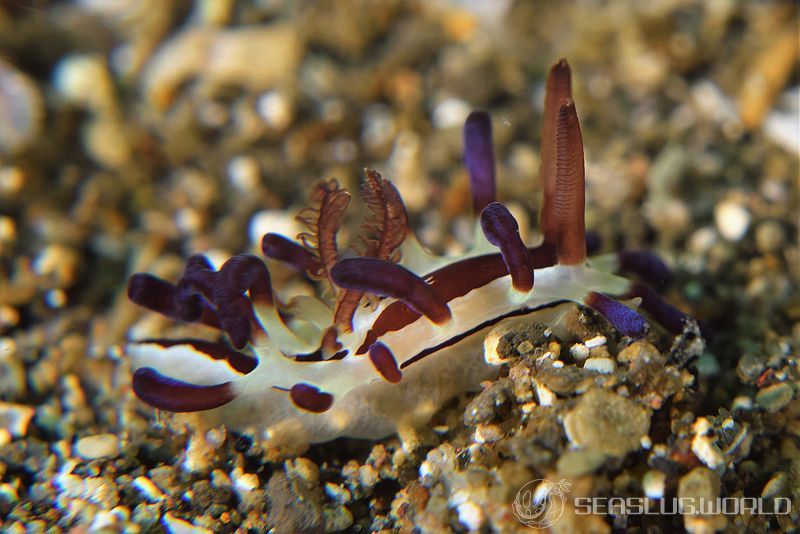MORPHOLOGY
The living animals (Fig. 1A) attain 30 mm in length. Preserved specimens range in size from 15–25 mm. The body is wide and dorso–ventrally flattened. There is a well–developed, distinct notal border. The foot extends posteriorly and is devoid of notal papil- lae. The general body color is translucent yellowish white. There is a broad mid-dorsal band of maroon pigment that runs from anterior to the rhinophores to the posterior end of the foot. The band divides around the mid-dorsal papillae and the two bifurcations rejoin each other posterior to the gills. The rhinophores and gill also have maroon pigment but also possess opaque white markings along their lengths. The medial and marginal papillae are maroon at the base and possess purple pigment more distally. There is a lateral line of maroon present on either side of the body between the notum and the foot. There are eight pairs of elongate notal papillae along the sides of the body. A single medial papilla is present mid-dorsally anterior to the gill. The gill consists of three unip- innate branches that are bifid or trifid at the base. The rhinophores are elongate with 31 congested lamellae. The anterior end of the foot contains two elongate rounded lobes that are united medial- ly. The genital aperture is situated on the right side of the body approximately a third of the length of the body posterior to the head. The foot is broad and is divided anteriorly. A groove separates the foot from the mouth and oral tentacles (Fig. 10A).
DISTRIBUTION
This species is known from the Luzon Island, Philippines (Gosliner, Behrens, and Williams 1996) and Sulawesi, Indonesia (present study).
ETYMOLOGY
The specific epithet kendi is the Filipino word for candy, in reference to its appearance to a sweet confection.
References

吉川芳輝
